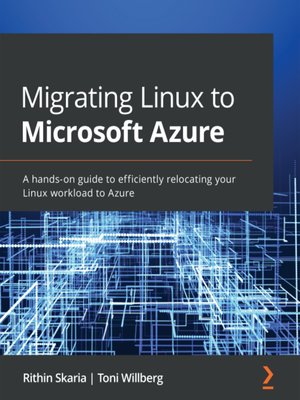Migrating Linux to Microsoft Azure
ebook ∣ A hands-on guide to efficiently relocating your Linux workload to Azure
By Rithin Skaria

Sign up to save your library
With an OverDrive account, you can save your favorite libraries for at-a-glance information about availability. Find out more about OverDrive accounts.
Find this title in Libby, the library reading app by OverDrive.



Search for a digital library with this title
Title found at these libraries:
| Library Name | Distance |
|---|---|
| Loading... |
Discover expert guidance for moving on-premises virtual machines running on Linux servers to Azure by implementing best practices and optimizing costs
Key FeaturesWith cloud adoption at the core of digital transformation for organizations, there has been a significant demand for deploying and hosting enterprise business workloads in the cloud. Migrating Linux to Microsoft Azure offers a wealth of actionable insights into deploying Linux workload to Azure.
You'll begin by learning about the history of IT, operating systems, Unix, Linux, and Windows before moving on to look at the cloud and what things were like before virtualization. This will help anyone new to Linux become familiar with the terms used throughout the book. You'll then explore popular Linux distributions, including RHEL 7, RHEL 8, SLES, Ubuntu Pro, CentOS 7, and more.
As you progress, you'll cover the technical details of Linux workloads such as LAMP, Java, and SAP, and understand how to assess your current environment and prepare for your migration to Azure through cloud governance and operations planning. Finally, you'll go through the execution of a real-world migration project and learn how to analyze and debug some common problems that Linux on Azure users may encounter.
By the end of this Linux book, you'll be proficient at performing an effective migration of Linux workloads to Azure for your organization.
What you will learnThis book is for cloud architects, cloud solution providers, and any stakeholders dealing with migration of Linux workload to Azure. Basic familiarity with Microsoft Azure would be a plus.







